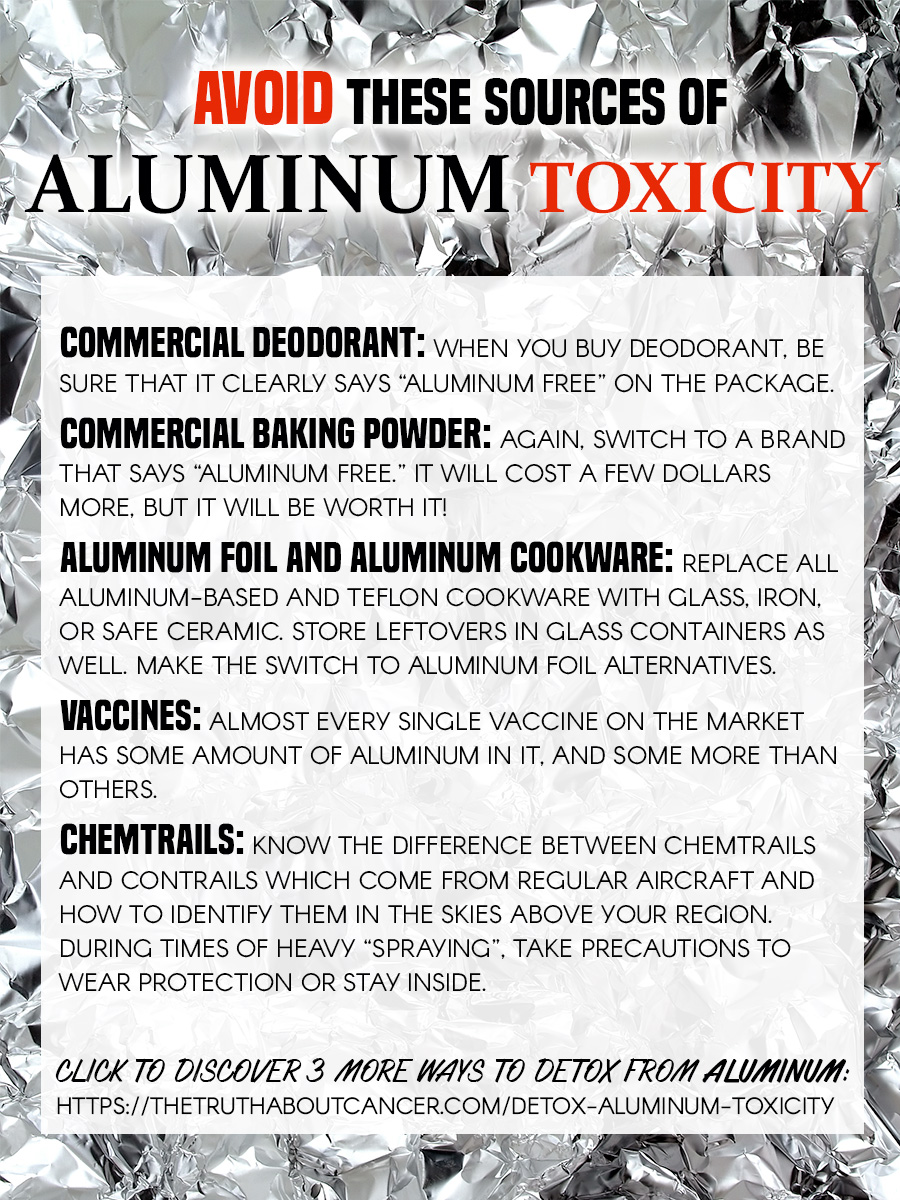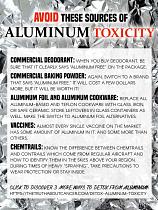Aluminum Linked to Dangerous Toxicity
Exposure to high levels of aluminum may lead to potentially harmful toxicity reports NaturalNews.com. Old age and reduced kidney function are two most common risk factors associated with aluminum poisoning. According to an article published in Medscape.com, aluminum toxicity is commonly found in patients with renal impairment. Long-term hemodialysis is also linked to increased odds of aluminum poisoning, as the treatment may lead to the accumulation of the heavy metal in the body. Symptoms of aluminum toxicity may include the following:
- Anemia
- Impaired iron absorption
- Muscle weakness
- Seizures
- Impaired immunity
Aluminum toxicity is also found to trigger:
- Bone pain
- Non-healing fractures
- Spinal deformities
- Premature osteoporosis
Other more prominent symptoms of aluminum toxicity include:
- Delayed growth in children
- Altered mental status
- Dementia
The heavy metal is found practically everywhere: food, water, air and even soil. This makes aluminum exposure unavoidable for most people. Some sources of excessive aluminum exposure include:
- Foods containing high levels of aluminum
- Dusty environments
- Workplace air contaminated with aluminum dust
- Living in areas where aluminum mining and processing take place
- Living near harmful waste sites
- Living in areas where aluminum levels are naturally high
- Receiving vaccines with aluminum
NaturalNews.com elaborates that aluminum is the most abundant metal in the planet, and is widely
known for its many uses in various industries such as metalworking,
construction, and health care. The heavy metal is often combined with
other elements including oxygen, silicon, and fluorine.
Aluminum is used
in the production of various common commodities such as beverage cans,
pots and pans, airplanes, siding and roofing, and foil. According to the
Center for Disease Control and Prevention (CDC)’s Agency for Toxic Substances & Disease Registry (ATSDR), the heavy metal is also used in water treatment
and abrasives, as well as medications and personal care products
including antacids, astringents, buffered aspirin, food additives, and
antiperspirants.
The ATSDR cautioned that excessive aluminum exposure is
tied to adverse musculoskeletal, neurological, and respiratory
conditions.
More of this article can be read HERE.
Comments
There are 0 comments on this post













